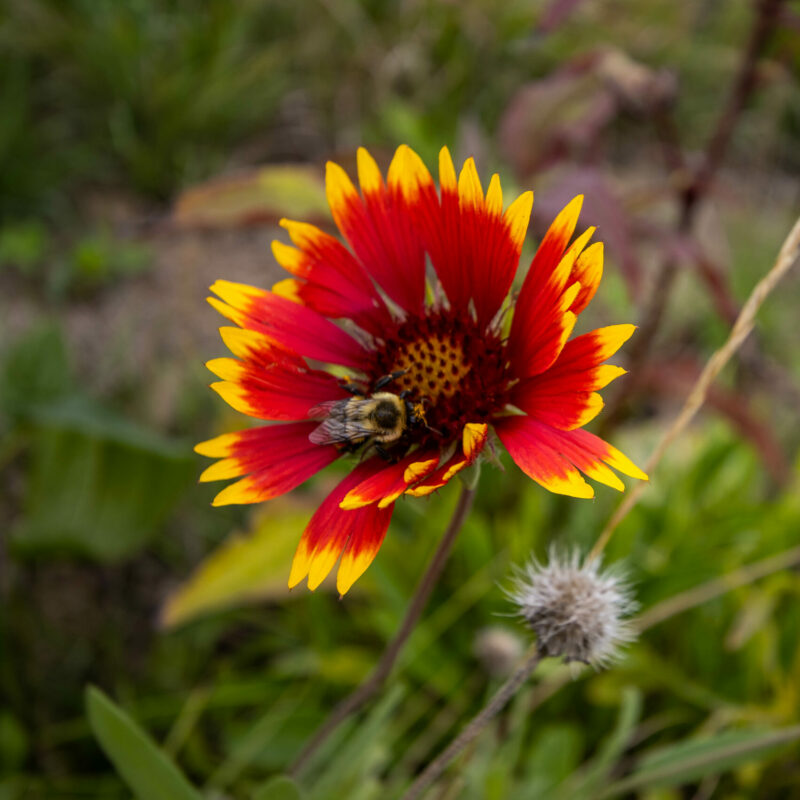
Fall might be Minnesota’s most underrated season for planting native perennials. While we think of gardening during spring, there are tons of benefits to planting in fall. We asked Blue Thumb Partners to share what they like about fall gardening and their tips for a successful fall planting experience. Mid-summer is a perfect time to start a plan for creating or adding onto a native pollinator garden this autumn!
Why plant in fall?
For one thing, fall is cooler. “Cooler weather is easier on both the plants (less transplant shock) and the humans doing the work,” shares Julie Noren of Light Dark Landscape. It also means less watering is needed for new plants in the weeks after planting.
Less risk of plants drying out, Mike Mesch of Dogwood Designs explains, “creates great growing conditions which will allow plants to establish roots and come up strong in the spring.”
Ground temperatures are still relatively warm, which encourages root growth. This helps native plants during winter, shares Dawn Christensen of Prairie Restorations, when perennials enter an extended state of inactivity to preserve their energy for the next growing season. In this way, she shares, “planting natives in the fall utilizes a plants’ natural reproduction cycle to its benefit.”
Planting in fall also promises more growth in spring. “By getting your native perennials established in the fall,” shares Wyatt Shell of My Home Park, “they will have a great ‘head start’ over spring-planted perennials the following year.” The departure of summer’s pests and reduced weed pressure also helps lighten the load of new plants.
When buying native plants in the fall, Paige Pelini of Mother Earth Gardens adds, “you’re getting plants already a half year more established. So they are more likely to bloom that first spring.”
More space for prep work during summer
Waiting until fall to plant also gives you time to adequately prep your site for planting. “Often in the spring, people can feel rushed to get their planting done,” says Christensen. Rushed site prep can mean a planting full of weeds later on. “Taking a slow and steady approach to this process will be something you are thankful for in the years to come!”
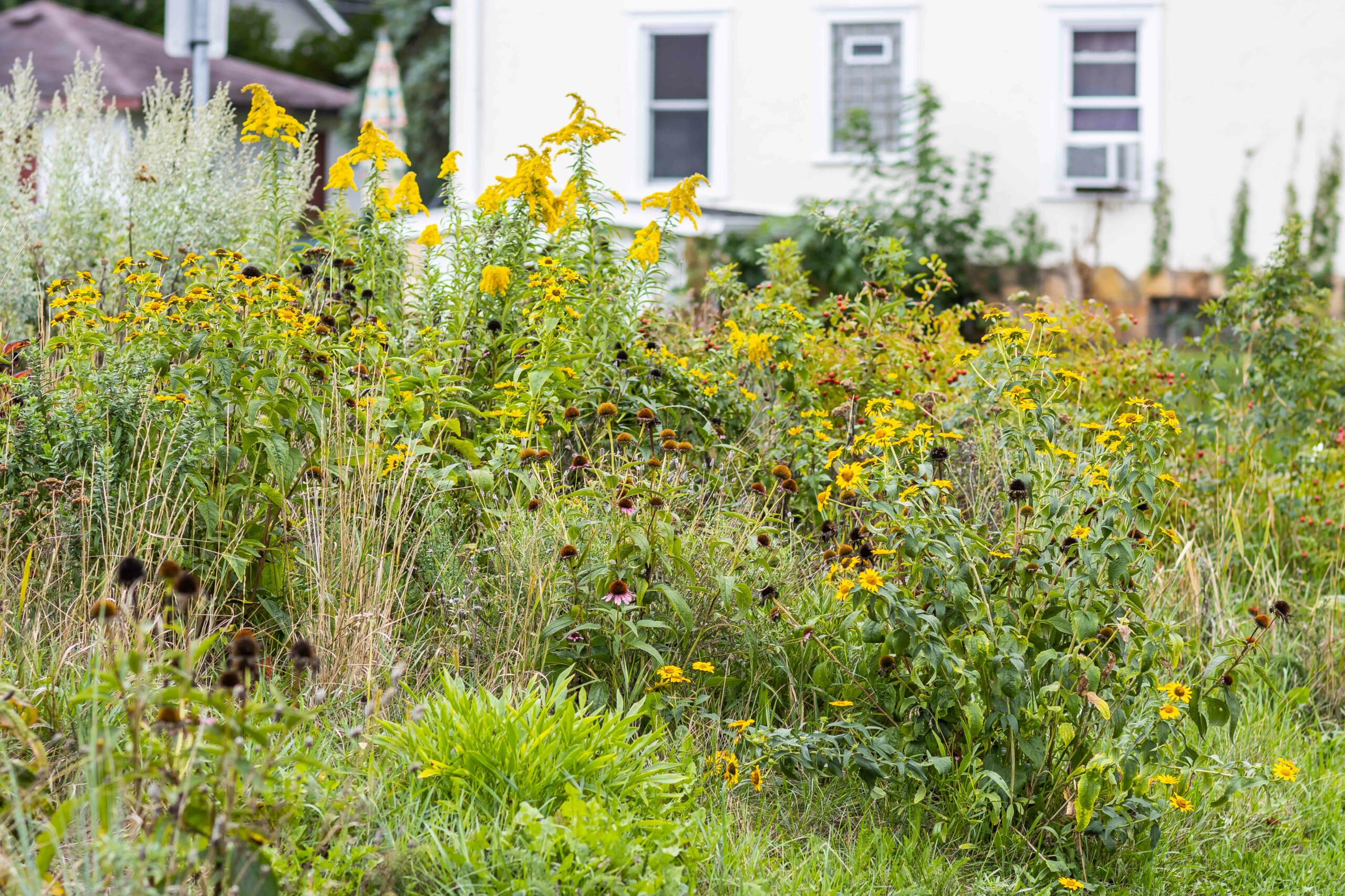 With existing vegetation grown in, summer is also a good time to assess sun and shade conditions and identify the area you want to plant in. “You could also take inventory of existing plants in your garden that are abundant and transplant them in the fall,” Noren shares.
With existing vegetation grown in, summer is also a good time to assess sun and shade conditions and identify the area you want to plant in. “You could also take inventory of existing plants in your garden that are abundant and transplant them in the fall,” Noren shares.
“It’s a great time to do window shopping in nature,” says Pelini. “Walk around. Really see what that Joe Pye weed or blue false indigo look like — how much room will you need?”
And don’t forget to call before you dig! “Part of the planning process needs to involve submitting a locate ticket to Gopher One Call to have the buried lines marked,” says Mesch.
If you have weeds or turf to remove, summer can be a great time to manage that. “If you’ll be planting in an existing garden bed, it’s important to do a very thorough weeding so that your new young plants won’t have to deal with competition,” shares Pelini.
If there are more weeds than you’re able to easily remove manually, use a non-chemical smothering method like sheet mulching or solarization. “Using an opaque tarp, plastic covering or even just some broken-down cardboard boxes, you can lay these out over an area you’re aiming to clear to kill off everything underneath,” explains Shell. “After about 2 or three months — pretty much right when you’re ready for a fall planting — you can remove those covers and finish prepping the bed for your new plants.”
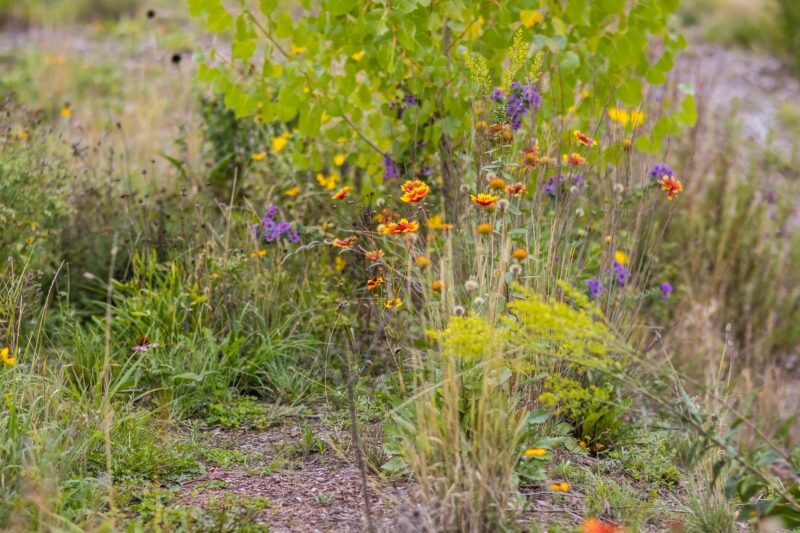 Smothering now “gives you time to make sure the weeds are completely gone and gives you time to re-do the garden prep if the weed roots survive and come back,” shares Dustin Demmer of Blazing Star Gardens. “If you do it during the short spring season, sometimes the weeds will re-sprout after you’ve planted the garden, and then it’s twice as hard to get rid of them!”
Smothering now “gives you time to make sure the weeds are completely gone and gives you time to re-do the garden prep if the weed roots survive and come back,” shares Dustin Demmer of Blazing Star Gardens. “If you do it during the short spring season, sometimes the weeds will re-sprout after you’ve planted the garden, and then it’s twice as hard to get rid of them!”
Summer is also a great time to get a design from a landscape designer that specializes in native plants. “The design will serve as your road map for the path ahead,” shares Mesch. “Once you have a design you can start sourcing plants.”
While fewer plants are available in the middle of summer, many native plant nurseries refresh their stock for the fall.
“If the plant stock is healthy, you should feel confident getting most any native species you’re excited about planting in the fall. Sites like My Home Park let you schedule your plant orders by week, so you can order in June for a shipment in September,” shares Shell.
“As long as they’re available from growers, Mother Earth Gardens has native plants available until the beginning of October,” adds Pelini.
Getting the timing right
When is the best time to plant native perennials in fall? “Native perennials need about 6 to 8 weeks of care to become sufficiently established and have a successful winter dormancy,” explains Shell. Planting between late August to early October gives plants the time they need to get settled before the first frost.
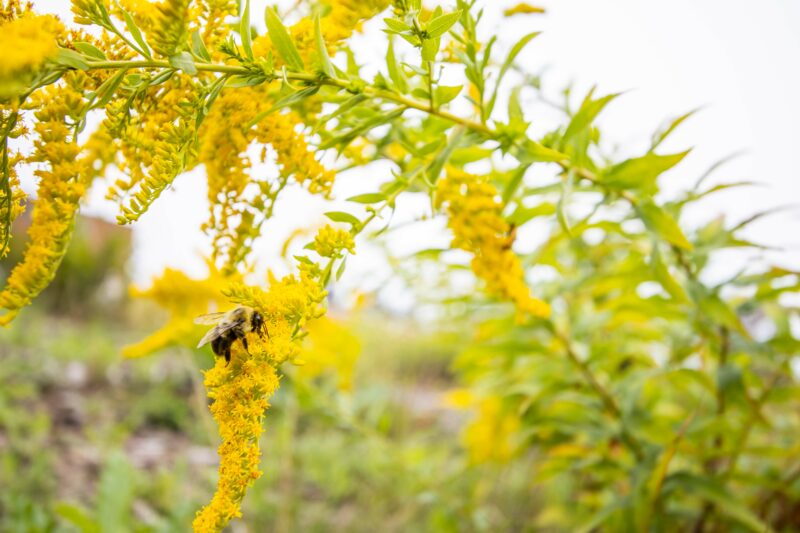
Minnesota’s native plants are prepared to survive our harsh winters, but for extra support, shares Noren, “adding two to three inches of wood mulch can help insulate and protect the new roots and prevent the new plants from ‘frost heaving’ out of the ground during the late winter freeze/thaw cycles.”
What about seeding projects? “Applying the seed in the fall is the best way to ensure that the natural requirements of the seed are met to initiate germination and have the most success for your project,” says Christensen. Because seeds are usually cheaper than potted plugs, she shares, incorporating seeds into your planting plan can help increase diversity while reducing the overall cost of your project.
If you already have a pollinator garden, “fall is a good time to reassess the garden and fill in any gaps that never closed up,” shares Demmer. “We always recommend planting densely from the start instead of waiting a few years for plants to spread by seed.”
Planting in fall gives you something to look forward to during the winter. “When I plant things in the fall, I don’t see the plants enough to remember what I planted, so it’s a fun surprise to see what pops up in the spring!” Demmer says. His pro tip: label or stake fall-planted plants so you know where to expect them in the spring.
Keeping pollinators in mind
When selecting plants, don’t forget to choose native species that bloom into the fall. “Late season flowering perennials provide pollinators the energy stores they need to survive the winter,” says Mesch.
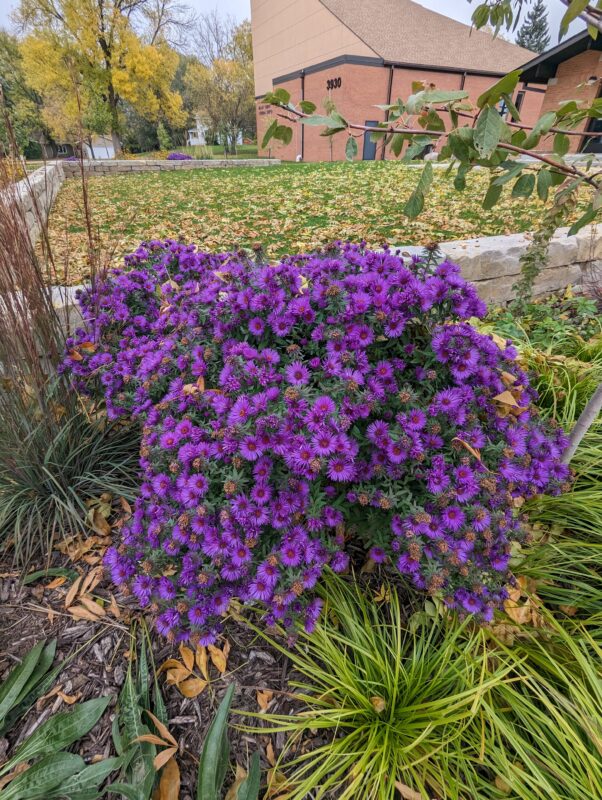 Christensen adds that many migratory insects like the monarch butterfly, depend heavily on late blooming native plants to make their journey south. “Solidago speciosa (Showy Goldenrod), Symphyotrichum oblongifolium (Aromatic aster), and Helenium autumnale (Sneezeweed) are all beautiful late season bloomers,” shares Christensen. “These and many others can easily extend the seasonality and diversity of your planting.”
Christensen adds that many migratory insects like the monarch butterfly, depend heavily on late blooming native plants to make their journey south. “Solidago speciosa (Showy Goldenrod), Symphyotrichum oblongifolium (Aromatic aster), and Helenium autumnale (Sneezeweed) are all beautiful late season bloomers,” shares Christensen. “These and many others can easily extend the seasonality and diversity of your planting.”
Planting native perennials is just one way to support pollinators in your yard. “Leave up plant material and seed heads all fall,” says Noren. “It provides habitat for overwintering pollinators, food sources for songbirds in the winter, and beautiful seed heads to look at above the winter snow.”
You can also think about what color you’ll be adding to your winter landscape, Christensen shares. “Schizachyrium scoparium (Little Bluestem) maintains a soft amber color into the winter months while maintaining a structure that provides shelter for birds and other small animals. Cornus sericea (Red Osier dogwood) is a small shrub that has striking red branches, making a wonderful addition to any appropriate landscape.”
Fall is also a good time to assess your landscaping practices for the year ahead. “As with other times of year, avoiding the use of chemicals, certainly any kind of pesticide but herbicides as well, is only ever a good thing,” Shell shares. Shell also recommends using the transition into fall to identify and remove any invasive plant species in your yard, ideally before they go to seed. “Even if a lot of pollinators visit these plants, ultimately the plants themselves will degrade and overrun the other parts of an otherwise diverse ecosystem if left unmanaged. Native plants are always the better option!”
A perfect way to close out the growing season
Autumn’s waning sunlit days can be bittersweet, but fall planting gives us a reason to enjoy its beauty. “Everything is glowing red and orange,” says Christensen. “I’m surrounded by goldenrod, asters at my knees, bumblebees humming and floating around me.”
For Pelini, fall planting gives her more space to relax and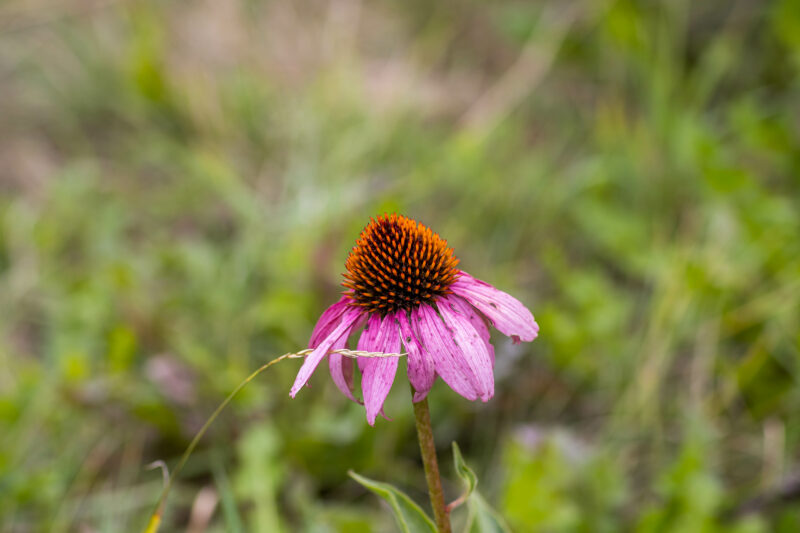 enjoy the process. “In spring there’s so much to do, from planting winter vegetables to cleaning beds. By fall, I can see everything that has grown in and better assess what I want to add or move around.”
enjoy the process. “In spring there’s so much to do, from planting winter vegetables to cleaning beds. By fall, I can see everything that has grown in and better assess what I want to add or move around.”
And if you already planted in spring, consider fall a bonus round! “It’s deeply satisfying to know I’m getting even more healthy habitat established for pollinators and other wildlife,” says Shell.
“Fall weather is delightful and it’s fun to be outside when the season is changing,” adds Noren. “Fall planting also means that the plants will grow quickly in the following growing season — many forbs will flower in that first season. Also the winter anticipation of watching all the new plants sprout is fun.”
Why not give fall planting a try? You can start your pollinator habitat project with any of the free DIY resources on our website, or check out our Blue Thumb Partners’ fantastic services below and on the Partner Finder.
– Megan Reich, Metro Blooms Communications and Program Manager
Featured Partners
Blazing Star Gardens grows and sells native plants at their Owatonna greenhouse and Twin Cities native plant sales. A small family business with a large reach, they also ship plants to native plant enthusiasts throughout Minnesota and the United States.
Dogwood Designs provides landscape consultation and design services in Minnesota and Wisconsin. Their projects range from native plants and rain garden design to extravagant backyard entertaining spaces.
Light Dark Landscape provides landscaping design, installation, maintenance, and restoration services in the Minneapolis — St. Paul area. Their goal for each landscape design is to create naturalized systems that provide year-round benefit for both humans and nature.
Mother Earth Gardens is a garden center that specializes in organic gardening, sustainably grown plants, and eco-friendly products. Visit their retail locations in Minneapolis’s Northeast and Longfellow neighborhoods.
My Home Park partners with expert, restoration-grade native plant nurseries skilled at producing and shipping out diverse gene lines of native perennials from May through late October. If you have a fall project in mind, they can help with pre-designed kits, a build-your-own kit, or even a full custom garden design shipped to your home with a bespoke planting map.
Prairie Restorations provides a full range of native seeds, plants, trees, and shrubs for restoration projects in Minnesota and surrounding communities. They are a full-service company offering consultation, installation, and management services for all sizes of residential projects, and have garden centers open to the public in their Princeton, Cloquet, and Scandia, MN locations.
